When you travel to a new country, you might have concerns about the water quality and if at all it is safe for consumption. We empathize with that concern, as not all countries have access to clean water. To make sure you’re well-informed and prepared when traveling, we’ve put together this guide to the countries with the best and worst water in the world.
To ensure our list is objective and reliable, we based our research on two main metrics from the 2022 Environmental Performance Index report (EPI) prepared by Yale Center for Environmental Law & Policy: unsafe drinking water and sanitation.
10 Countries With the Best Tap Water
Low pollution, fewer chemicals, and excellent sanitation give countries a leg up on clean drinking water.
Let’s look at countries with the cleanest water:
1. Finland
The bulk of Finland’s water comes from its 168,000 lakes, and the remainder comes from Finland’s rivers and tributaries. Lake Päïjänne, where the water is reportedly so clean you can drink it straight from the source, supplies most of the country’s water.
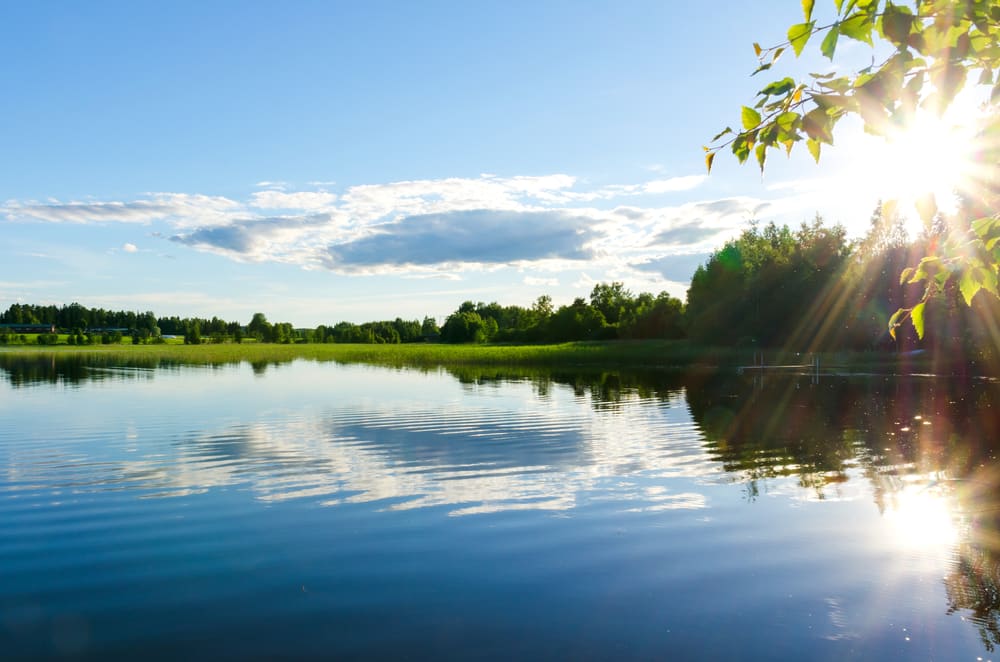
Finland subjects its water to multiple filtration and treatment methods to remove contaminants before distributing the water to households. Some of the filtration and treatment techniques include precipitation, sedimentation, ozone treatment, ultraviolet treatment, activated carbon filtration, and disinfection with chlorine and chloramines.
In most countries, industrial waste and improper wastewater treatment are the main reasons behind unhealthy drinking water since such waste always finds its way into the surface or underground water sources. In Finland, waste practices are strictly regulated, and wastewater is thoroughly treated to pose no health threat to the public.
2. Iceland
Iceland’s most beautiful natural wonders are its lakes, streams, and glaciers. So, while a portion of its drinking water comes from its waterways, most water comes from natural aquifers and springs. Because of this, it’s not surprising that many countries import bottled spring water from Iceland.
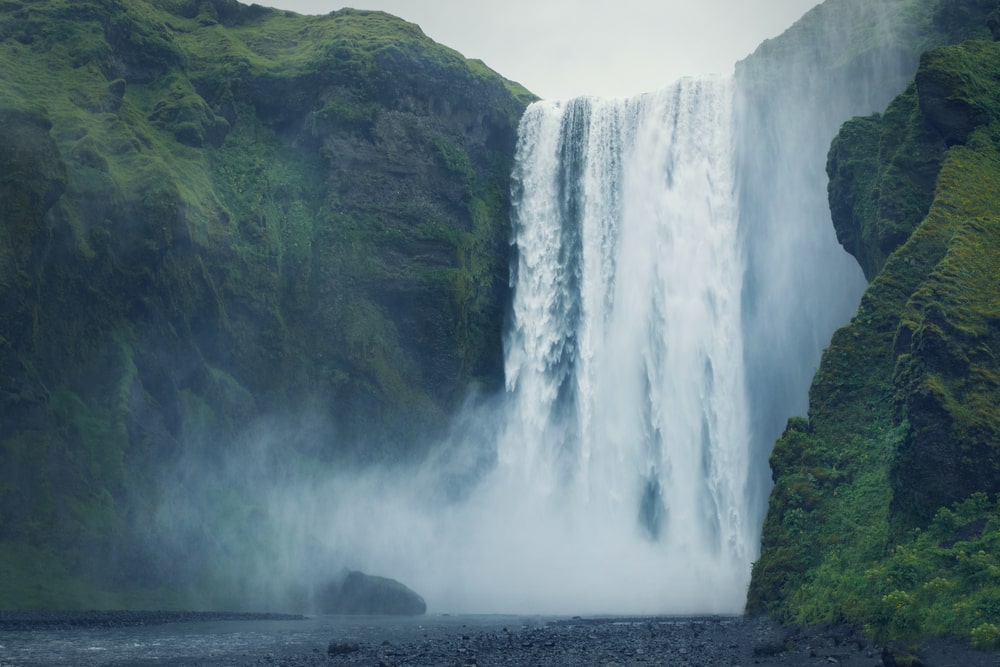
Iceland’s water is naturally immaculate, but it is due to the country stringent water treatment practices that the drinking water quality is so high. A 2016 study that tested their tap water revealed a health standard compliance of nearly 100%.
The water in Iceland is so clean that locals often suggest drinking straight from streams and rivers. Nevertheless, you should keep in mind that while water from these sources is probably safe to drink, you may want to avoid doing that in areas where agricultural or wildlife runoff could cause contamination.
3. Netherlands
The Netherlands often receives appraisal because municipal authorities don’t need to chlorinate drinking water to disinfect it from pathogens. This is because the water is already clean enough for human consumption.
Of course, the country doesn’t have magical water resources with no microbiological presence. They still treat the water sources, such as the underground aquifers, and subject them to rigorous testing to ensure they don’t get contaminated by runoff.
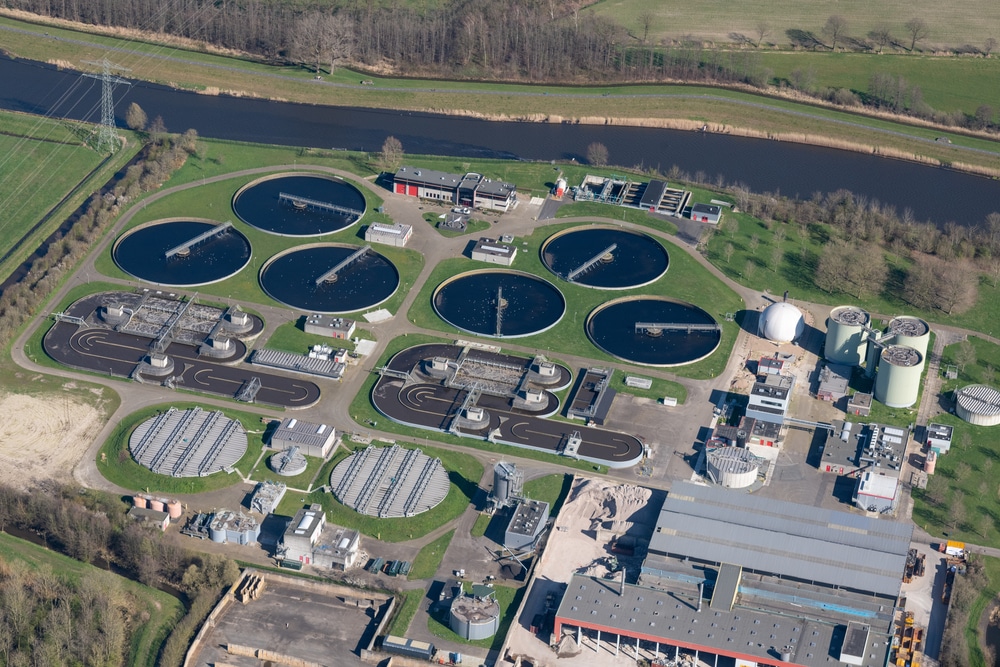
Additionally, the water sources in the Netherlands are then filtered through multiple water filtration steps such as sedimentation, filtration, ozone oxidation, and UV disinfection, which, in the end, makes chlorination somewhat redundant.
The Dutch combination of microbiological risk assessment and water filtration process is so efficient that the country’s ability to provide healthy water without chlorine is now a popular research topic.
4. Norway
Like Finland, Norway has strict regulations and employs a thorough filtration process for treating wastewater. This is how they protect their water sources from getting contaminated by chemicals found in everyday products like detergents, medicine, and paints. Its rigorous filtration process is also how the country provides some of the cleanest tap water in the world for its citizens.
Norway’s treatment of water isn’t limited to wastewater practices. In the last 20 – 30 years, the country has implemented many water-related policies, including pipe and well repairs and the replacement of old pipes to eliminate lead or copper components in the piping system.
That said, like in all countries across the world, there are still certain private wells in Norway that are not regulated or don’t yet comply with the regulations put in place by the Norwegian Food Safety Authority. So, even though tap water is of the utmost quality all around the country, it’s still a smart choice to avoid well water sources.
5. Switzerland
Although Switzerland’s water wasn’t always considered the world’s best, it is now. Over the years, the country has substantially raised its water treatment standards, and it can now boast of having some of the best drinking water in the world.
Switzerland’s water comes from clean lakes and underground sources, comprising about 80% of the country’s water. The remainder comes from surface reservoirs.

Although roughly one-third of Switzerland’s water is in a protected area and doesn’t require any treatment before consumption, two-thirds still require a multi-stage treatment process. This process involves membranes, ozonation, ultraviolet disinfection, and activated carbon filtration.
In addition to the water treatment process, like all the countries that have exemplary healthy tap water, Switzerland has meticulous water policies to ensure that its citizens aren’t exposed to contaminated water.
6. United Kingdom
Underground water sources makes up 30% of England and Wales’ tap water. The rest is surface water sources, such as lakes and rivers.
Regardless of the water source, the water providers in the UK have to filter the water before distributing it to customers. The filtration process entails flocculation, rapid gravity filters, slow sand filters, ozonation, ion exchange, and finally, chlorination.
Like Switzerland, the United Kingdom has many protective regulations and legislation to ensure that water sources remain safe. Even though it already provides healthy tap water to its citizens, it continues to implement new stringent rules for further assurance.
Lastly, similar to all the countries where citizens drink some of the cleanest water, the UK has sterling wastewater treatment programs. These programs prevent any kind of sludge, organic waste, or chemicals from polluting the natural water sources.
7. Malta
In Malta, there are two main water bodies: underground water reservoirs and seawater. We already know what underground water means, but how do you consume seawater?
Well, there are desalination plants that extract water from the sea, desalinate it, and then subject it to an industrial-level reverse osmosis (RO) process. To this end, Malta has three desalination and RO plants located in Cirkewwa, Pembroke, and Ghar Lapsi.
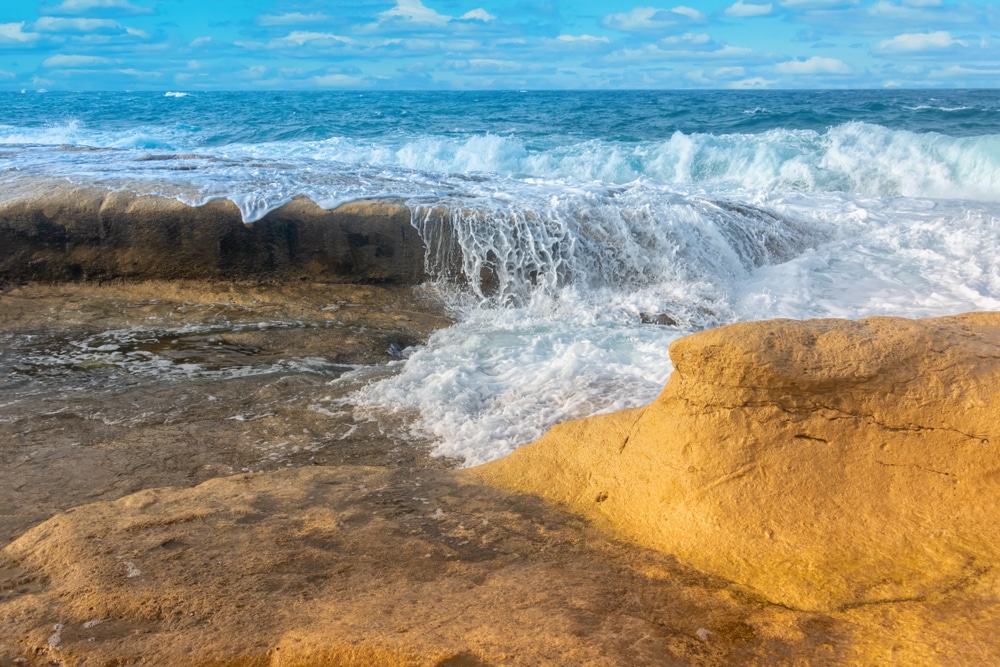
As a result, Maltese citizens drink some of the world’s healthiest water. The Maltese government even has a live portal where citizens can check the water quality in their area.
That said, most Maltese still prefer bottled water because the country’s tap water is rich in mineral content, meaning it’s hard. If the unique and somewhat bitter taste of hard water is not your thing, you should bear that in mind when visiting Malta.
8. Germany
More than two-thirds of Germany’s water is sourced from underground water sources or glaciers, with the rest consisting of reservoirs fed by lakes and streams. The German government regulates water more than it regulates many of its other natural resources, so all the water that makes its way to German citizens’ taps meets the requirements of the German Drinking Water Ordinance.
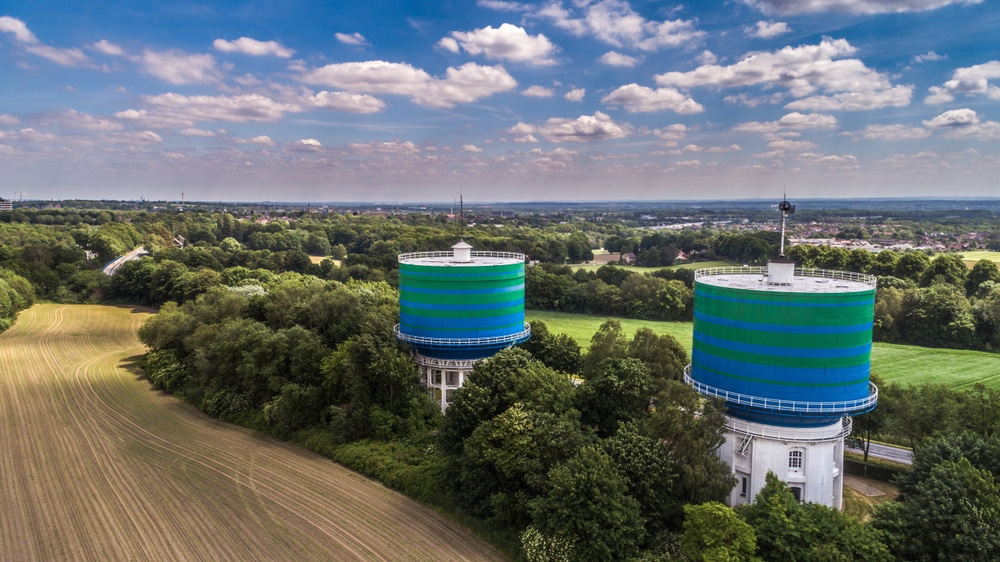
The groundwater is treated on-site with several filtration methods. Plus, the country has strict water standards that prohibit chemicals in the purification process. The lack of chemicals means the water in Germany never tastes like chlorine, which is another reason it’s among the world’s best.
Additionally, German water protection policies are among the best in the world, provides adequate supply for all citizens, and ensure long-term water availability.
That said, piping systems built before the 1970s sometimes give cause for concern because they can feature lead/copper solders or fixtures, which are a contamination risk. However, the authorities take immediate action whenever the presence of such heavy metals in water is reported.
9. Luxembourg
Luxembourg is one of those rare countries that provides water to citizens directly from springs. These springs comprise 60% of the country’s water supply, with the remaining 40% sourced from the Upper Sûre Lake.
Although the spring water found in Luxembourg has a nitrate level of 13 – 43 mg/L, these levels are well within the 50 mg/L threshold set by the European Environment Agency. However, we should also note that the United States Environmental Protection Agency sets its maximum nitrate standard at 10 mg/L.
Except for the nitrate levels, Luxembourg has mineral-rich and healthy water. The lake water passes through a series of filtration techniques, such as flocculation, de-acidification, and disinfection, making it safe for consumption.
Lastly, since the tap water in Luxembourg mostly consists of mineral-rich spring water, it is inevitably hard. However, water hardness is a subjective matter when determining water quality.
10. Sweden
Sweden is another Northern-European country that is home to some of the cleanest drinking water. Most of the country’s water comes from its lakes and streams, and it goes through multiple layers of filtration, including chemical and natural filters.
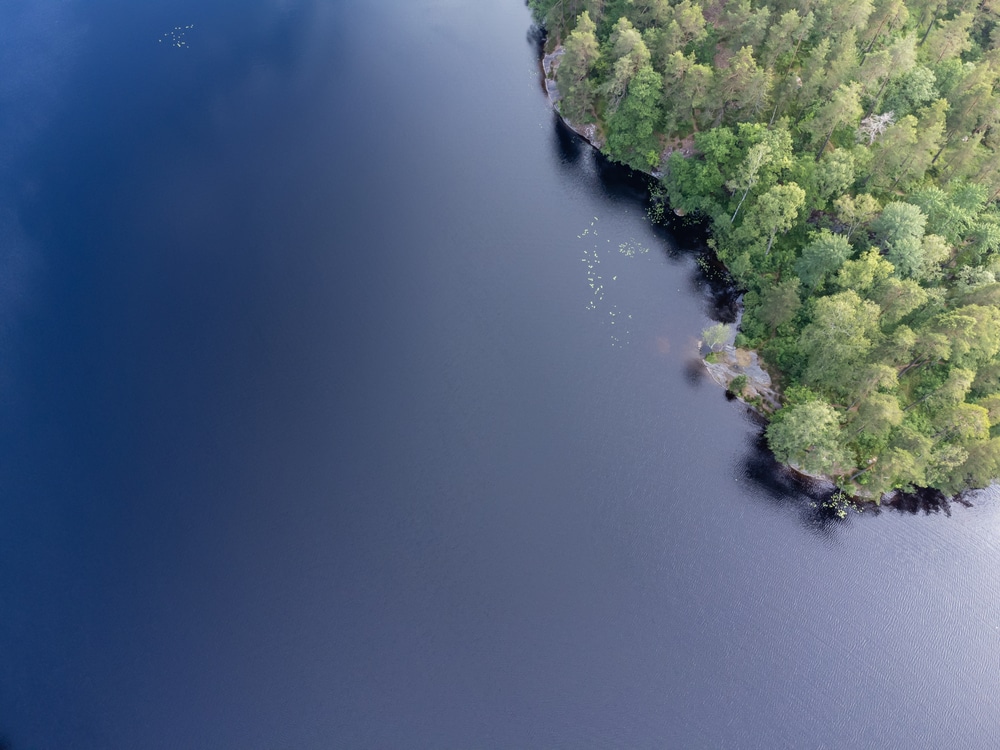
One of the main reasons Sweden’s water is so clean is due to the country’s lack of pollution. Clean air helps keep pollution from clouding the waterways, leading to safe drinking water in citizens’ taps.
As a testament to Sweden’s clean water, the International Organization for Standardization awarded Sweden a Certification of Quality in 2017. This certificate labeled the water in Stockholm is of a “high and consistent quality“.
10 Countries With the Worst Tap Water
Many countries worldwide don’t have access to clean water or advanced filtration technology. As a result, these countries tend to have high pollution levels, little or no sanitation practices, and no wastewater treatment. Because of this, contaminated water sources in many densely populated areas are a common occurrence.
Sadly, dirty drinking water can lead to the spread of many waterborne diseases and illnesses like diarrhea. According to the 2022 Yale Environmental Index Report, these are the countries that have suffered the most from waterborne diseases and deaths:
Countries with the worst water quality:
1. Chad
The Republic of Chad in Central Africa is home to more than 16 million residents. Yet, less than half of Chad citizens have access to basic drinking water services. Combined with a low sanitation rate of 10%, many residents are at high risk of contracting diseases.
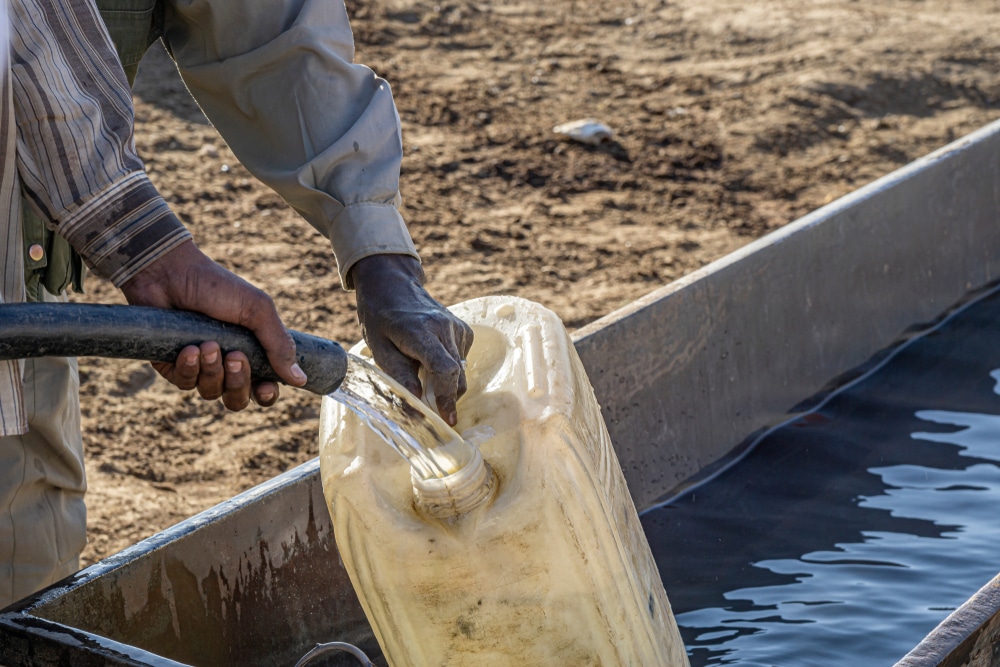
Most of Chad’s residents don’t have access to toilet facilities. This has led 68% of the population to practice open defecation. This also leads to additional problems since open defecation often occurs near water sources making water contamination a significant issue.
Fortunately, Chad’s government has laid out goals for improving tap water access. The main goal is to eliminate open defecation by providing more residents with toilets. Although progress has been slow, circumstances are improving, and we’re hoping that Chad won’t be at the top of this list in the future.
2. Central African Republic
The Central African Republic has had a silent water crisis, and only a recent United Nations study revealed the whole extent of it. What we know now is that in the Central African Republic, only 37% of the whole population has access to “at least basic” drinking water services.
Although the numbers regarding water sanitation are a bit better than in Chad, they’re still far from satisfactory. Broken down to numbers, this means that out of almost 5 million Central Africans, just 27% have access to sanitized water.
The water is constantly contaminated with human fecal matter, improper industrial waste practices, and unregulated, aggressive agrochemical compounds. As a result, there are ample cases of waterborne diseases in the Central African Republic, varying from gastrointestinal issues to tuberculosis.
3. Niger
Niger is doing better than the Central African Republic and Chad in terms of access to drinking water, as 56% of its population have access to it. In terms of sanitation, however, Niger still has a long way to go, as only 13% of the population can access basic sanitation services.
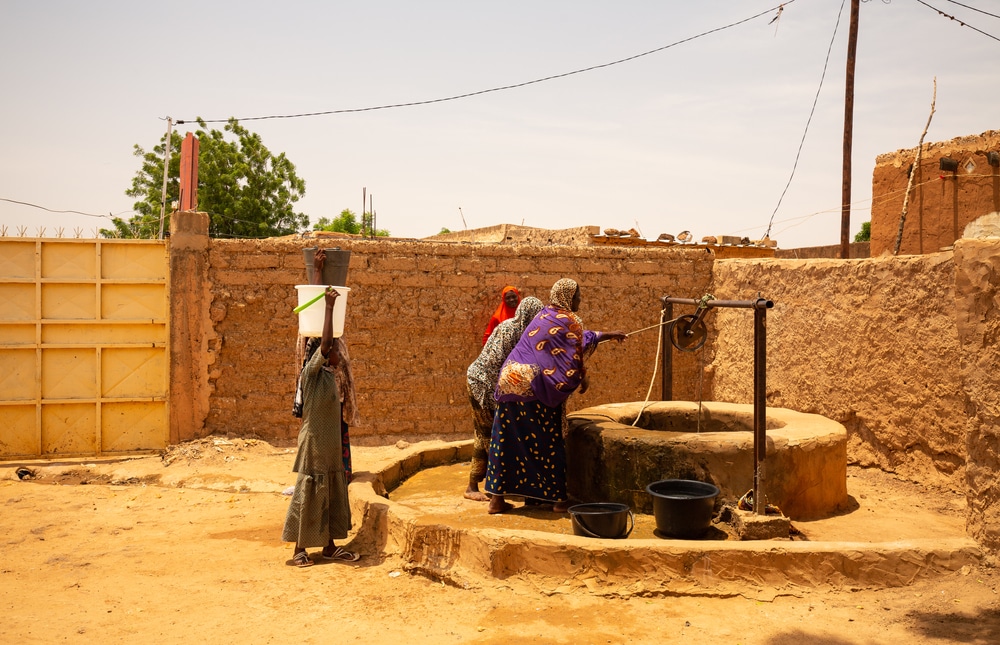
Open defecation in Niger is even more common than in Chad, with 71% of the population engaging in this practice. Moreover, schools rarely have access to sanitation, and there are no adequate menstrual hygiene services. The two issues combined pose an even greater risk of water contamination.
Recently, UNICEF has started the National WASH Programme to address these issues. It entails practices that aim to end open defecation and build a sanitized piping system to provide clean drinking water on a larger scale. The projected end of this program is in 2030, which means that the water in Niger will continue to be a threat to its citizens until the next decade.
4. Nigeria
As of 2018, approximately 60 million Nigerians have no access to clean tap water. To make matters worse, around 80 million residents lack clean water and proper sanitation. These significant water problems that plague the country stem from poor infrastructure and a lack of resources.
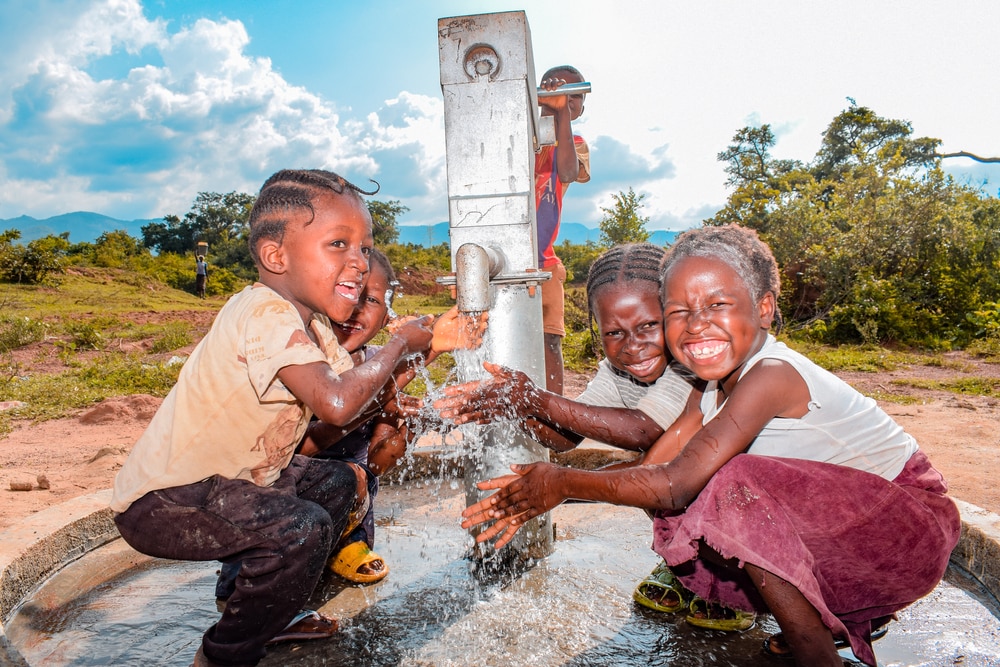
In 2018, the Nigerian government declared a state of emergency due to the country’s water conditions. As a result, the country began a 13-year plan to improve the water and sanitation access and needs.
Since the start of the initiative, the country has installed more than 2,000 water access points and 6,500 hygiene facilities. In addition, many states are now certified as free of open defecation.
5. Togo
In recent years, the water quality in Togo has increased quite a lot. Nowadays, 91% of the urban population and 44% of the rural population have access to at least improved drinking water resources.
Yet, that doesn’t mean that Togo has a similarly high percentage when it comes to access to sanitation services. Despite the best efforts of international programs, sanitation access in Togo is still one of the lowest in the world at 12%.
Additionally, wastewater treatment and waste management overall are not at adequate levels. As a result, waterborne diseases and deaths continue to pose a significant concern for Togo citizens.
6. Burundi
Like in Togo, there’s no proper wastewater treatment practice in Burundi, nor are there adequate waste management programs. As a result, even though 81% of the population has access to drinking water resources, there’s no guarantee that these resources are contaminant-free.
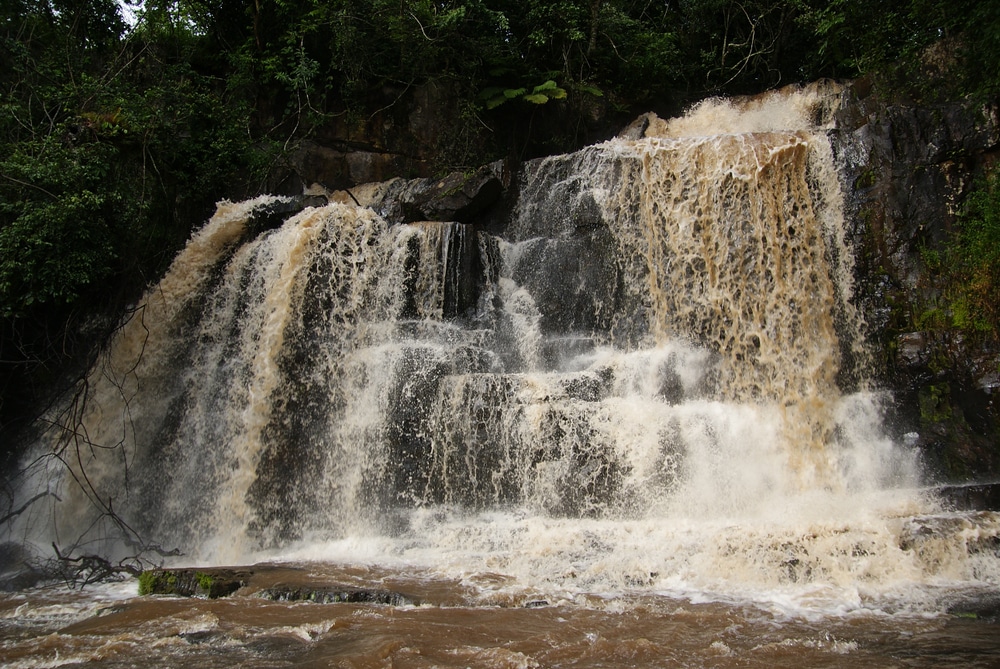
According to the latest UNICEF report, the existing water infrastructure is rarely maintained. Moreover, open defecation is still very much a reality, despite all the UNICEF efforts to mobilize communities all across the country.
Therefore, regardless of the high percentage of access to drinking water, the water quality in Burundi is still alarmingly poor.
7. Madagascar
Despite being an island, Madagascar is prone to droughts and has a low water supply. In addition, it has no wastewater treatment at all, which inevitably leads to low drinking water quality.
Although recent supranational efforts have yielded more access to safe drinking water all over the country, the latest reports show that, out of its 28 million population, only half of them have access to clean drinking water. Some reports also demonstrate that only 3.4 million people in the country have a decent toilet facility.
As a result, the water quality in Madagascar is below global health standards, and nearly 6,500 children die yearly from waterborne diseases like diarrhea. But since there are on-going efforts and practices put in place for improving the water quality in Madagascar, we believe that the situation will quickly change in the upcoming years.
8. Eritrea
Eritrea has recently committed to providing access to safe drinking water and sanitation for all citizens, but the situation in the country is similar to Niger – these targets are set for 2030.
Currently, Many Eritreans lack access to basic water resources, so they use untreated surface water, like rivers, as their main water source.
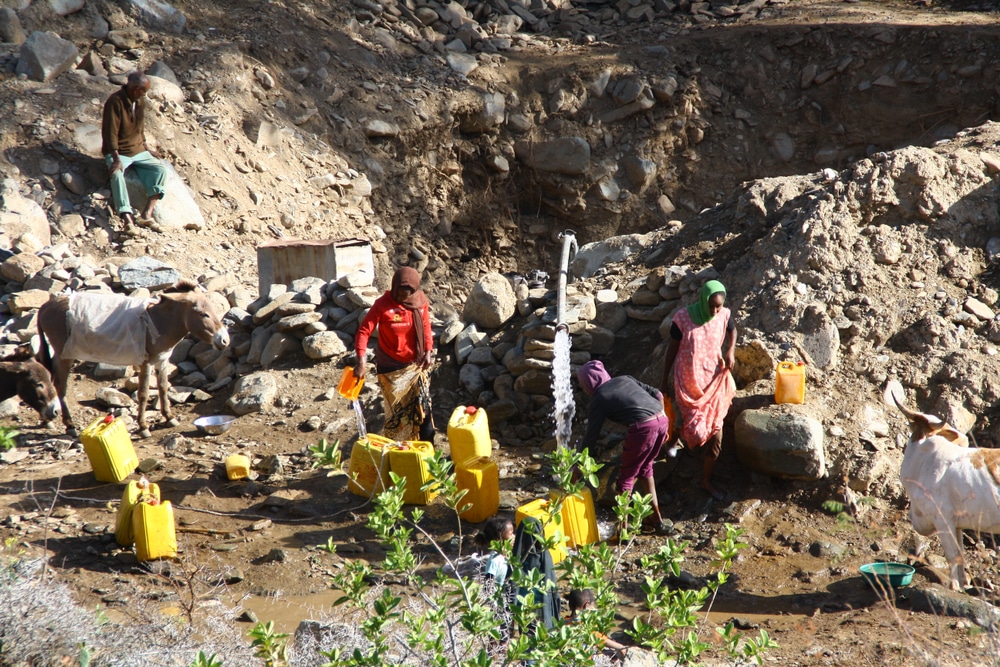
Considering the lack of wastewater treatment, sanitation, and adequate waste management, these surface water supplies inevitably get polluted with several contaminants varying from chemical compounds in agricultural products to organic waste.
Consequently, gastrointestinal diseases like diarrhea and cholera are still common problems in Eritrea due to exposure to contaminated drinking water.
9. Guinea-Bissau
Between 2000 and 2015, the water quality and access to basic water sources in Guinea-Bissau saw a drastic improvement. Yet, providing access to water sources doesn’t always guaranteed it is safe for human consumption.
A 2020 study shows that even though there’s a piping system in place now in Guinea-Bissau, the water becomes contaminated with fecal matter while making its way from the source to citizens’ taps. Additionally, the water in Guinea-Bissau is rich in dangerous chemicals like nitrates and heavy metals such as hexavalent chromium.
So, water-related diseases and fatalities are not rare in Guinea-Bissau.
10. Lesotho
Lesotho is one of the most water-rich countries located in the continent of Africa. Natural water sources like lakes and rivers are prevalent all across the country. However, the safety and sanitation of these water sources remain contestable despite recent strides showing that the country has made improvements in the water development department.
Studies show that 97% of the country’s water sources are contaminated with total coliform bacteria. Given that the total coliform bacteria are not pathogenic, this wouldn’t have been a concern if the same studies didn’t also show that 71% of the bacteria are the problematic subspecies of Escherichia coli, which can cause endemics and lead to deaths.
Considering that wastewater treatment, sanitation, and waste management are still not satisfactory in Lesotho, waterborne illnesses present a big risk for citizens. That said, the country is committed to improving its water quality in the next decade.
How Tap Water Is Determined Clean/Safe To Drink
It’s hard to determine if tap water is safe simply by looking at it. Because of this, governing bodies regularly perform water tests to decide whether or not the water is clean and safe to drink.
When they do, they consider the following factors:
Turbidity
Tap water should be clear and free of any visible contaminants. The amount of visible pollutants in water is called turbidity.
Regulatory bodies will test the water’s turbidity to determine its safety. Cloudy water or water with floating particles is a sign that you shouldn’t drink it.
Contaminants
When a government agency chemically tests drinking water, they look for contaminants you can’t see with the naked eye. Contaminants include microorganisms or bacteria that cause illnesses, originating from sewage, or fecal matter.
If you don’t have access to clean water, remember that bottled water is always an option, as long as it’s been factory-sealed and it’s from a safe source. You can also ensure that your water is safe to drink by following these CDC recommendations for decontamination:
- Boiling your drinking water for at least one full minute;
- Using a chemical disinfectant such as unscented chlorine bleach;
- Portable water filtration systems;
- Using an ultraviolet light.
Pollution
Pollution in an area near a body of water is another way to determine water quality. For example, areas that practice open defecation or where there’s a lot of agricultural runoff will typically have poor drinking water.
Salinity
A water’s salinity will tell you how much salt is in the water. High salt levels can be toxic, causing illness in humans and animals. Increased salinity is present where there’s little rainfall and high evaporation.
What To Do if You Have Bad Tap Water
If you’re traveling abroad or live in an area where tap water is unsafe, you have a few options; boil the water, drink only bottled water, or buy water from water vendors.
Boil Your Water
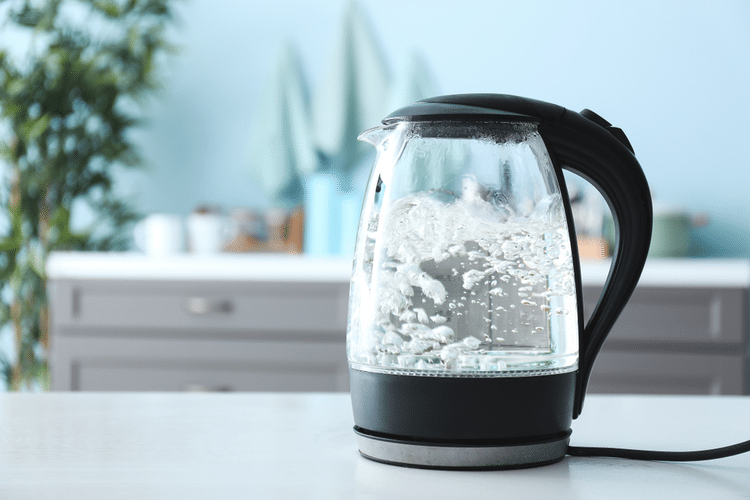
A common and inexpensive method of sanitizing water is by boiling it. Boiling is all but a guaranteed method to kill germs, viruses, bacteria, and parasites. To properly sanitize water, bring it to a rolling boil for at least one to three minutes. Then, let it cool down and store it in sanitized containers.
Drink Bottled Water
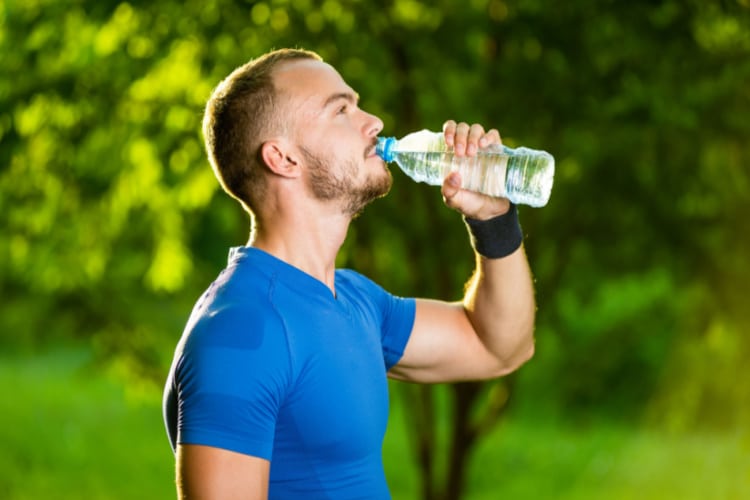
Although maintaining a stock of bottled water can be challenging, it is one of the best ways to ensure you have access to clean water. Bottled water either comes from springs or undergoes rigorous purification processes (purified water), so you won’t have to worry about contamination.
Buy Water from Water Vendors
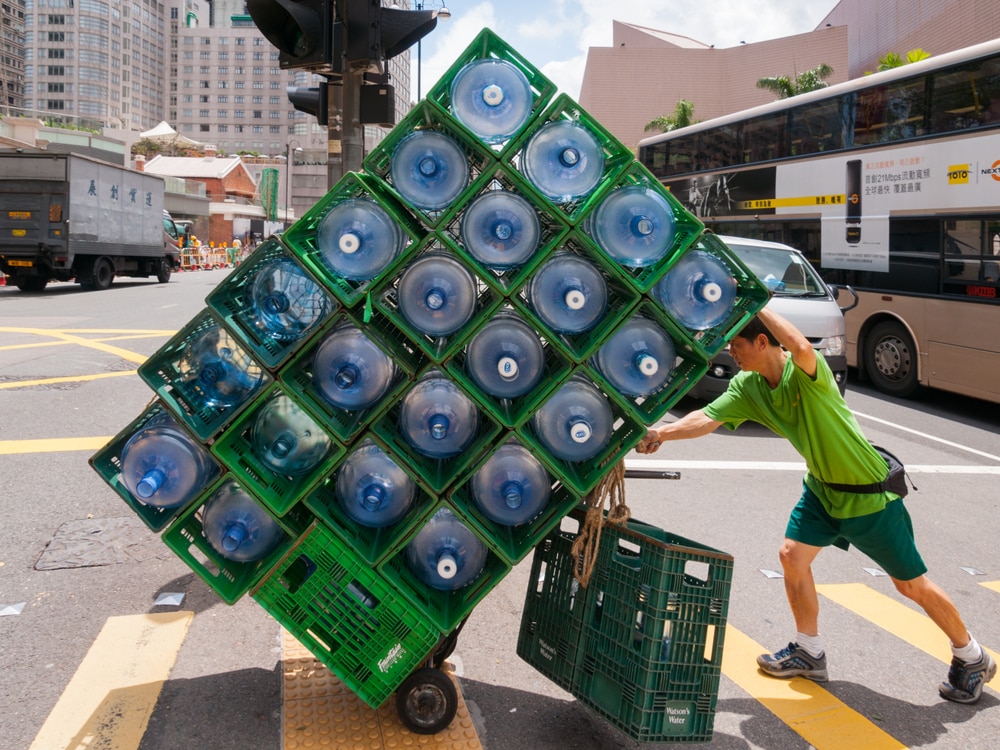
Water vendors make a living off providing water in some of the hardest-hit regions. The main downside to water vendors is that people often have to travel long distances to reach them. In addition, the water is costly, and sometimes there’s no guarantee it’s safe to drink. Therefore, it’s very important to only buy from vendors you trust.
Conclusion
Access to clean drinking water is a luxury many countries don’t have. Countries with clean water typically enforce stricter regulations while ensuring proper infrastructure and adequate sanitation facilities to process and decontaminate water.
Unfortunately, poor countries often don’t have access to those things. So, if you plan to travel, check your destination’s water quality. Then, if necessary, be prepared to purchase bottled water or boil your own.
Where does the US stand on the list? Can we see the entire list somewhere? Thx. Rich.
Am I living in an alternative universe when I read the list of countries with clean drinking H2O and somehow Canada didn’t make this list? Keeping in mind the problems that exist in Indigenous communities still in 2023 with their drinking H2O it seems baffling to me that the country as a whole doesn’t rate right up there with the top countries on any list of safe clean purified aqua sources. Have personally drank from lakes with H2O so clear you can see clear down to the bottom while most of the literally millions of H2O sources like freshwater lakes and rivers have never been touched by human hands. Sure would like to know who complied this list.
Hi Wat, thanks for reading. A couple of important points to note in relation to your comments. First, the competition is stiff because we’re talking about the top countries of the world that do a very good job of delivering clean drinking water to their citizens. Second, that’s the dimension to focus in on of how actual drinking provider is provided to citizens. Canada is blessed with excellent water, sure, but how that’s delivered to all population centers and especially in the context of travelers is how this article was written.